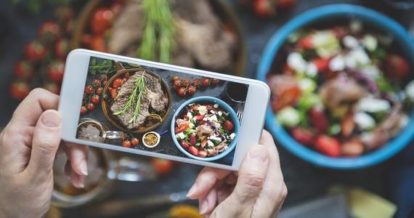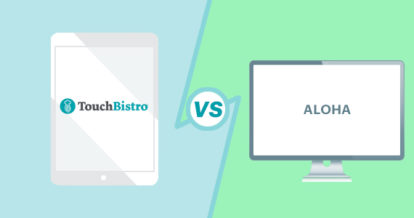With ever-changing restrictions and even curfews for restaurants, cafes, and pubs in the UK, communication with customers has become even more crucial to your success.
So, question: What’s the most effective way to communicate what you’re offering, when you’re open, and more?
Answer: Having a solid strategy when it comes to social media marketing for restaurants.
Whether you’ve resumed dining room service or you’ve launched a shiny new takeaway and delivery programme, you need to get the word out to your customers – pronto!
With 40% of UK adults reporting increased social media use during the pandemic, restaurateurs have an opportunity to leverage social platforms to reach guests while foot traffic is down. Social media should be a top priority in your COVID restaurant marketing plan.
In this guide, we’ll cover how to use social media for restaurants with 15 tips to help you up your game and entice guests.
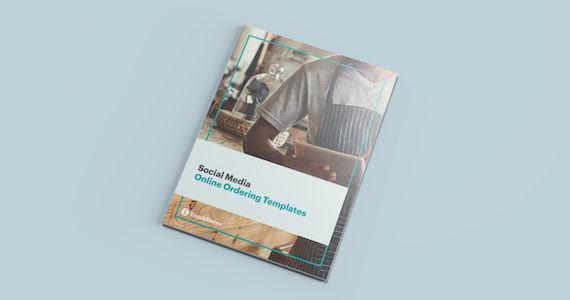
Drive sales and brand awareness with our free social media templates for restaurants.
Social Media for Restaurants: Top 3 Platforms
Your time and resources are limited, so it helps to be strategic about where you focus your efforts on social media. Let’s break down a few different platforms and their benefits for your restaurant.
1) Must-Use: Instagram
Restaurant Instagram marketing is a must. This visually-driven social network lends itself perfectly to photos and videos that will get guests craving your food and drinks. Instagram boasts 1 billion monthly users, and its users are 10 times more engaged with brands than Facebook users, which makes the social network a solid place to invest your restaurant’s time and energy.
If you’re wondering whether to prioritise your Instagram feed or stories, the short answer is that the best restaurant Instagrams do both. Your feed is an ideal place for branded evergreen content (think images of your signature dishes, and graphics that use your font and colours), which can help you capture the attention of new audiences through geotagging and hashtagging – but more on that later.
On the flip side, you can have fun and try new engagement tactics with stories. Instagram stories disappear after 24 hours and only your followers see them (unless you add them to your profile), so you can be casual and spontaneous without affecting your brand’s image.

2) Must-Use: Facebook
Your restaurant social media strategy should include a Facebook page. Especially while we’re in the midst of a pandemic and information is changing quickly, guests will often look here to find your restaurant’s hours, address, and to get in touch with you directly in a way that doesn’t require a phone call (Millennials and Gen Z, anyone?!).
You can take online bookings directly through Facebook if you add a “Book Now” button to your page, and your guests can post reviews, which act as powerful social proof to entice new diners to your restaurant. You can also create events on Facebook that guests can RSVP to attend. And if you have the budget for it, Facebook ads for restaurants can be an effective way to expand your reach beyond your current fans.
3) Bonus: Pinterest and Twitter
If you’ve got the bandwidth, Pinterest and Twitter are two other social networks you should consider. The former is a great place to share visuals with recipes and has a strong female audience. According to Statista, 45% of women use Pinterest, compared to just 27% of men.
Twitter is an ideal platform to share quick updates with your followers, answer questions, and engage in conversation – especially “witty” is a good fit for your brand. The best part? More than 90% of Twitter users who follow small businesses plan to make a purchase from them.
Restaurant Social Media Tips You Need to Try
Now that you know where your restaurant should have a presence on social media let’s dig into how to use social media for restaurants with 15 tips.
1. Use High-Quality Photography
A glaring flash never did anyone any favours – your food included. While you don’t need to hire a professional photographer, you can elevate your restaurant social media game by making sure each of your photos is well-lit, in focus, and set against an appealing background (no messy tables or smeared sauces, please!).
2. Incorporate Your Branding
Branding is a vital part of digital marketing for restaurants. You need to go beyond simple photos to present a unique atmosphere and experience only possible in your restaurant. Showing off your food and drinks should be a top priority on social media, but part of knowing how to use social media for restaurants includes sprinkling your logo and brand colours into your content. This is especially important for building brand awareness among new audiences who may not have dined with you before and giving them a glimpse into your restaurant’s personality.

Drive sales and brand awareness with our free social media templates for restaurants.
3. Get Behind the Camera
Consumers want video. Today, 81% of businesses use video in their marketing, and your restaurant should get on board this gravy train, too. Some of the following tips lend themselves well to video, like sharing your new restaurant initiatives and behind the scenes content. Remember, a video doesn’t have to be shot by a pro to be engaging – it just needs to be on-brand and deliver valuable information to your guests in an interesting way.
4. Highlight Your Post-COVID Dine-in Experience
While some guests aren’t ready to dine with you just yet, others are excited to visit your restaurant and want to know what the experience is like nowadays. Social media is a great place to share this information.
Carefully consider which types of customers you are trying to attract, and let them guide the social media marketing strategy for your restaurant. With these customers in mind, post photos of your new setup, generate hype about your new menu items and let guests know what precautions you’ve put in place to keep them safe.
5. Promote Takeaway and Delivery
Whether your guests dine with you in-house or not, they all deserve some love on social media. Takeaway and delivery will likely be significant revenue streams for some time, so if you have suggestions for menu items that travel well, promote them to your guests on your social channels. You can share exclusive takeaway deals and ask your customers for reviews. You can also get people excited about delivery by sharing photos of thoughtful packaging.
6. Share Important Updates
In times of uncertainty, people turn to social media for up-to-the-minute information. Your guests may not think to check your website for updates, but they’ll definitely check your social channels to find out what your hours are during the pandemic, and whether they need to make a booking to dine with you. Social media is also an ideal place to communicate updates about the group sizes you’re currently accepting.

Drive sales and brand awareness with our free social media templates for restaurants.
7. Use Research to Inform Your Content
Almost 60% of marketers reported that social listening would be crucial in 2020. If you haven’t tried it yet, you can use free or paid tools to monitor online conversation and sentiment about topics related to your restaurant – for example, farm-to-table dining. You can then get involved in the conversation or create your own content around the topic. Social listening is a great way to get a sense for what your audience is interested in.
8. Post the Right Amount, at the Right Times
While you want to make an impression on your social media followers, you don’t want to annoy them by posting too often. People can quickly tune out any social media for pubs and restaurants if they see too much of it. However, you also don’t want to miss them completely by posting at the wrong time!
If you can swing two posts per day on Instagram at a minimum, you’re doing well. On Facebook, two posts a day is a healthy maximum. The best time to post on both social networks is in the afternoon or evening.
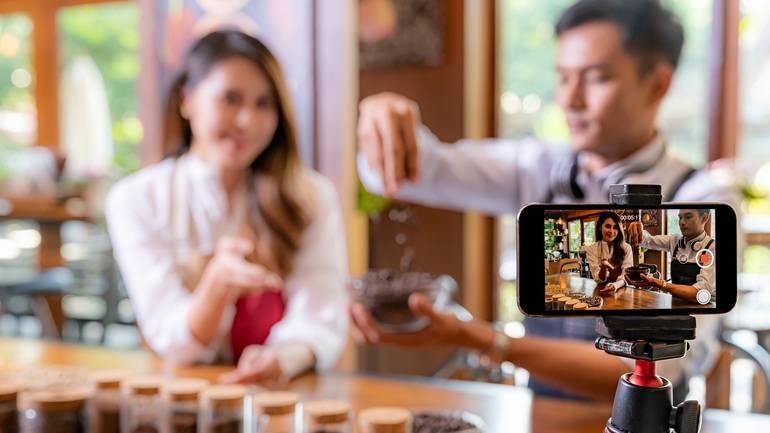
9. Use Geotags and Hashtags
Geotagging and hashtagging your Instagram posts help your restaurant’s content get found by new audiences who follow or search for those particular locations or hashtags. Be sure to separate your hashtags from your photo caption so they don’t clutter it up. The best restaurant Instagrams use a mix of hashtags that relate to the specific photo, the restaurant, the location, or popular Instagram hashtags such as #foodie or #photooftheday.
10. Monitor and Engage with Questions, Comments, and Reviews
These days, it’s not enough to simply slap a restaurant social media profile up online and call it a day. You need to have someone (or a few people) responsible for monitoring your social channels and answering questions, responding to comments, and thanking guests for reviews. Social media is a two-way conversation. If you don’t engage with your followers, they may stop following you or visiting your restaurant.
11. Share User-Generated Content
You can take the previous step even further by sharing photos and videos created by your audience. This is an excellent way to celebrate your guests on social media and make them feel special. If you don’t have a ton of user-generated content, you can run a contest to encourage guests to share pictures of their favourite dishes with you and tag your restaurant in the photos.
12. Pull Back the Curtain to the Kitchen
Whether your restaurant has an open kitchen or not, you can give guests a glimpse into back-of-house operations by sharing behind the scenes content on social media, such as how popular dishes are created. If you choose to go this route, just make sure your kitchen is spotless and camera ready (and that includes everyone following proper physical distancing and mask wearing where possible!).

Drive sales and brand awareness with our free social media templates for restaurants.
13. Invest in Social Media Advertising
If your local newspaper is the only place you’re advertising your restaurant, it’s time to get online. Organic content (social media posts that you don’t pay to promote) is super important these days – a very genuine way to spread the word about your restaurant.
But if you want to really increase your reach, sometimes you need to put some money behind your content. That could mean paid ads on these platforms (which don’t get added to your feeds or stories), or “boosting” your organic posts so that similar audiences to your followers also see that content. It’s a smart move considering that for 74% of people, social media is a stepping stone on the path to purchase.
14. Try Influencer Marketing
If your restaurant has the time and the budget to dedicate to working with a social media influencer, this can be a great way to expose your content to a new audience with similar interests to your current customers. Digital marketing for restaurants is not easy, since it’s a competitive space. Influencers can help you stand out because they have loyal followings and the power to impact purchase decisions. Plus, they know how to make your food look amazing in their photos.
15. Show Your Partners Some Love
Social media shouldn’t be all about you. Posting shout-outs to your partners – other restaurants, suppliers, vendors, community groups – is an excellent way to build a network of local businesses and spread good vibes (and sales!).
The bonus? If they return the favour, that’s free promotion for you!
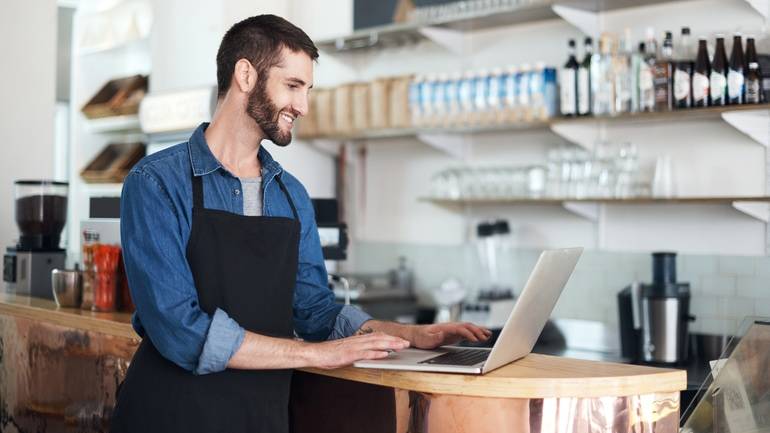
Put Your Restaurant Social Media Knowledge to Work
Social media may look like fun and games from the outside, but it takes thoughtful, consistent effort to create an online presence for your restaurant that successfully engages your current guests and attracts new ones. It’s important to remember that you can do more harm to your brand than good if you don’t take the time to get it right.
Luckily, you don’t have to recreate the wheel to find success on social media. Download TouchBistro’s social media templates to learn the best ways to post your current menu and promote online offers, how to share new safety initiatives, ways to give your profile a more human feel, and top tips for each platform. We’ve got your back – now go have fun with it!

Drive sales and brand awareness with our free social media templates for restaurants.
by Carly Albright
Carly is the Global Marketing Specialist at TouchBistro. Her passions are eclectic and uncompromising. She is a self-declared connoisseur of chips and has travelled the world to discover its finest offerings.
Sign up for our free weekly TouchBistro Newsletter

